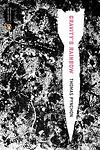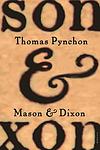Thomas Pynchon
Thomas Pynchon is an American novelist known for his dense and complex novels. His most celebrated works include 'Gravity's Rainbow,' 'The Crying of Lot 49,' and 'Inherent Vice.' Pynchon is noted for his intricate plots, dark humor, and themes involving history, science, and conspiracy. He is also known for his reclusive nature and very few photographs of him exist.
Books
This list of books are ONLY the books that have been ranked on the lists that are aggregated on this site. This is not a comprehensive list of all books by this author.
-
1. Gravity's Rainbow
Set during the end of World War II, the novel follows Tyrone Slothrop, a lieutenant in the U.S. Army, as he tries to uncover the truth behind a mysterious device, the "Schwarzgerät", that the Germans are using in their V-2 rockets. The narrative is complex and multi-layered, filled with a vast array of characters and subplots, all connected by various themes such as paranoia, technology, and the destructive nature of war. The book is known for its encyclopedic nature and its challenging, postmodernist style.
-
2. The Crying of Lot 49
The novel follows the journey of a woman who stumbles upon a centuries-old conflict between two mail distribution companies when she is appointed the executor of her ex-lover's will. As she delves deeper into the mystery, she begins to question her own sanity and the reality of the conspiracy itself. The story explores themes of communication, interpretation, and the struggle to find meaning in a chaotic world.
-
3. V
"V" is a complex novel that intertwines two parallel narratives. One follows Benny Profane, a discharged U.S. Navy sailor involved in a group of bohemian artists and hooligans called the Whole Sick Crew, while the other narrative is a series of historical accounts researched by Herbert Stencil, who is on a quest to uncover the identity of an entity known only as V. The narrative oscillates between various global locations and time periods, including Egypt in 1898, Southwest Africa in 1922, and Malta in 1919, among others. The book explores themes of entropy, human connection, and the nature of identity.
-
4. Mason & Dixon
"Mason & Dixon" is a postmodern historical novel which follows the story of the 18th-century British astronomers and surveyors Charles Mason and Jeremiah Dixon, who are known for the Mason-Dixon line. The novel is written in a complex, digressive style, and it includes numerous sub-plots and a wide range of themes. It explores the scientific, philosophical, and sociopolitical issues of the Enlightenment era, as well as the personal lives and friendship of the two title characters.
-
5. Against the Day
The novel is a sprawling epic that spans the period from the 1893 World's Fair to the years following World War I. It follows the stories of several characters including the anarchist Traverse family, a group of balloonists, a detective, and a mathematician. The book explores themes of anarchism, capitalism, and technology, and incorporates elements of science fiction, adventure, and historical fiction. It is noted for its complex structure and dense, multifaceted narrative.
-
6. Vineland
This novel is a complex, multi-layered narrative set in the 1980s in California, weaving together themes of government surveillance, counterculture, and the loss of the 1960s idealism. It follows the story of Zoyd Wheeler, a former hippie, as he navigates a world that has drastically changed from the one he once knew, with the Reagan administration's conservative policies in full swing. The narrative delves into the lives of various characters, including Zoyd's daughter Prairie and his ex-wife Frenesi, exploring their connections to a shadowy federal agency and their personal quests for identity and redemption amidst the remnants of a bygone era. The book is a rich tapestry of historical references, quirky humor, and poignant observations about America's cultural and political landscape.
-
7. Bleeding Edge
Set in the tech-boom-and-bust era of the early 2000s in New York City, the novel follows a sardonic and street-smart fraud investigator who becomes entangled in a web of cyber intrigue, corruption, and conspiracy. As the protagonist navigates the shadowy underbelly of Silicon Alley, she encounters a quirky cast of hackers, entrepreneurs, and government agents. The narrative weaves together the aftermath of the dot-com bubble burst and the looming shadow of 9/11, creating a tapestry of paranoia, dark humor, and cultural references that capture the zeitgeist of an era on the brink of transformative terror and technological change.






